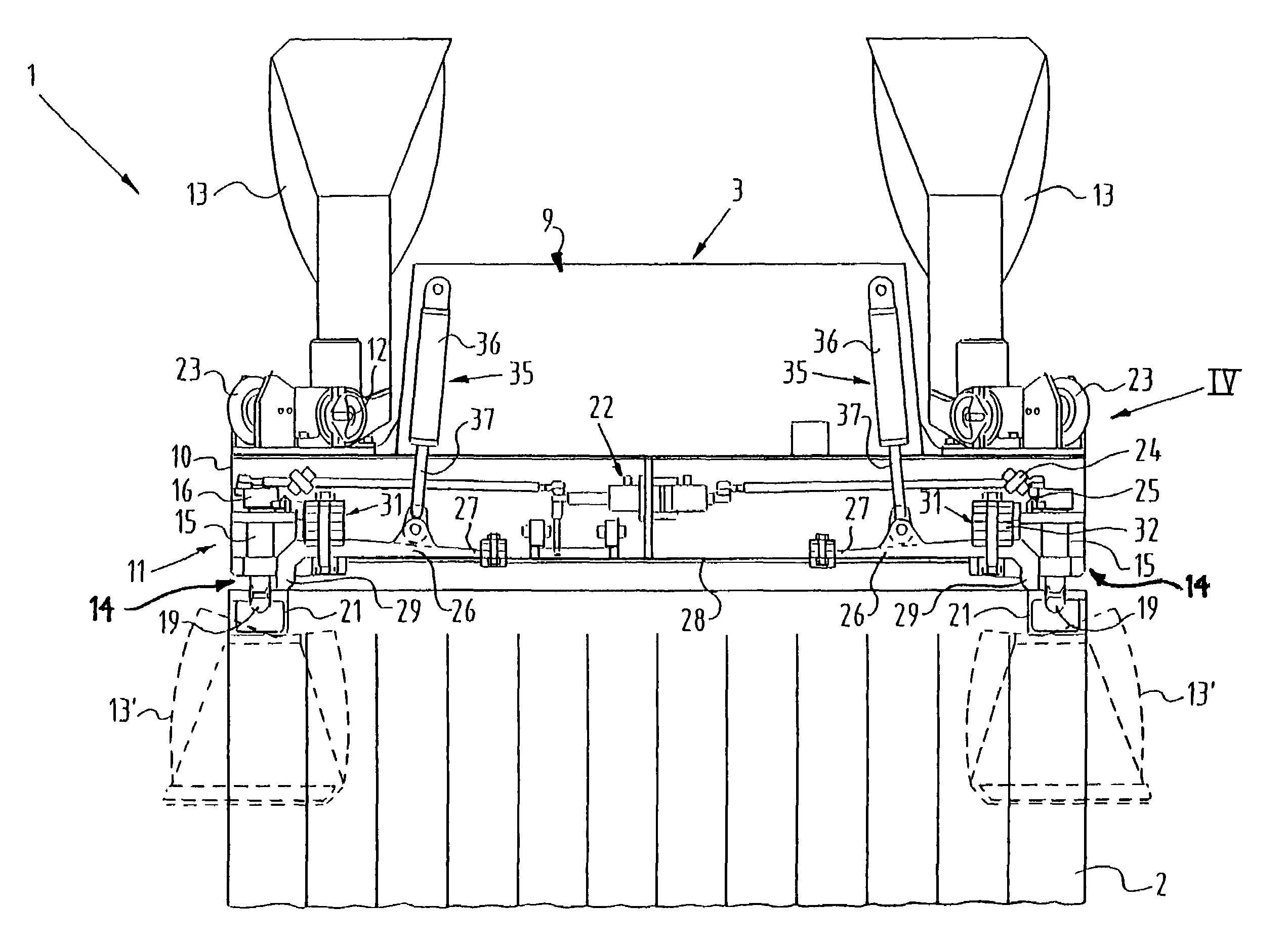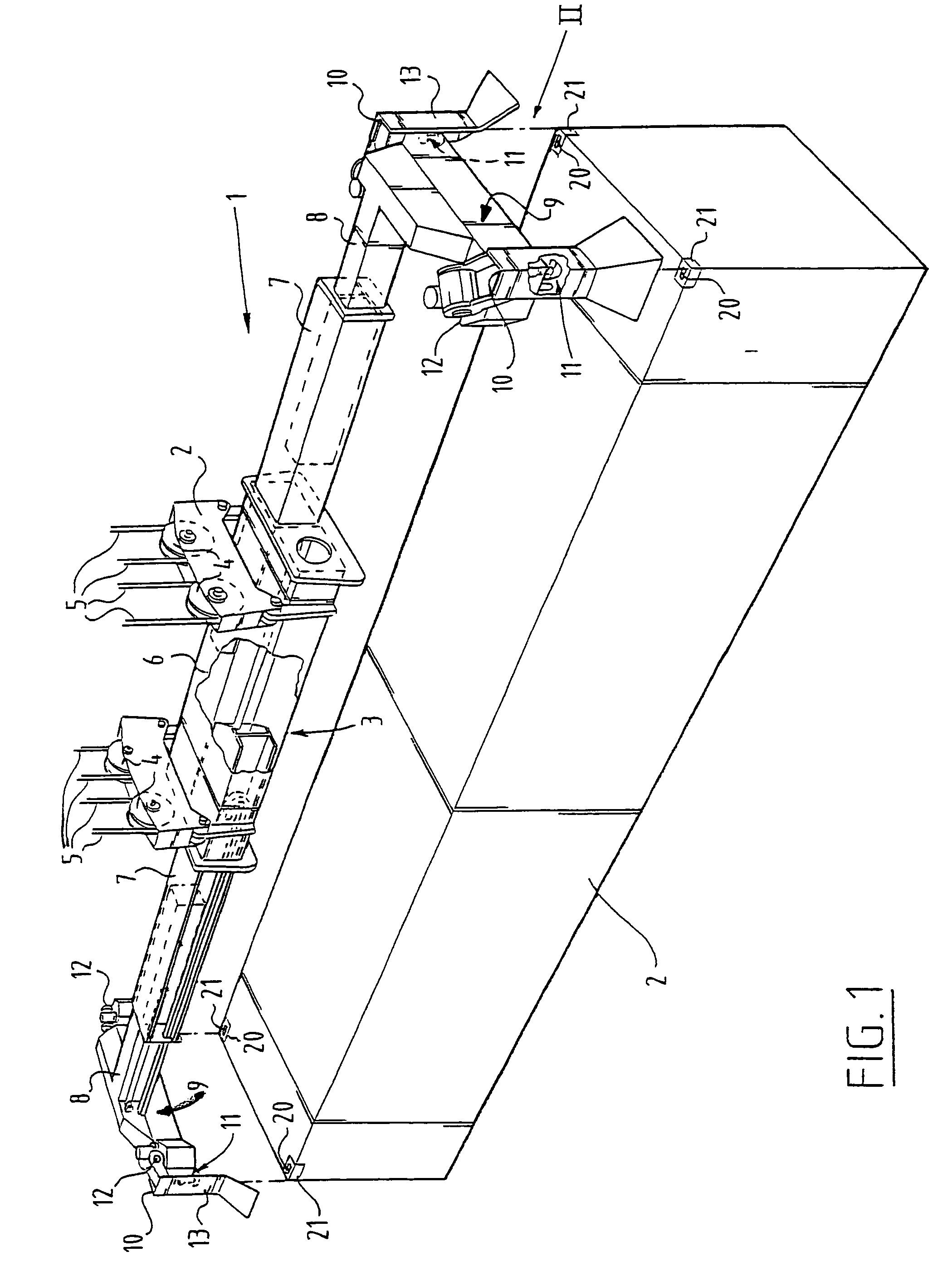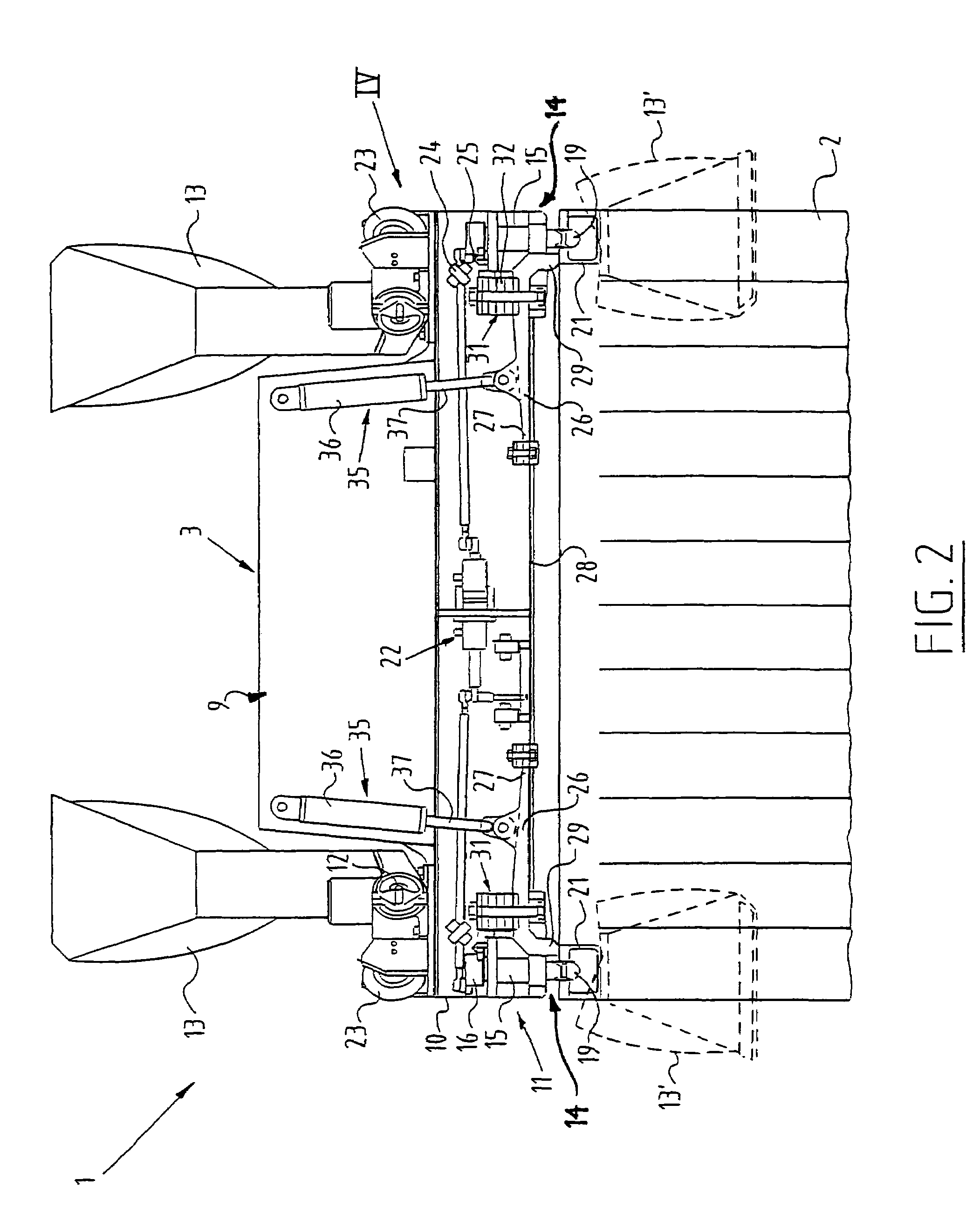Container gripping device having contact elements for braking
a technology of contact elements and gripping devices, which is applied in the direction of load-engaging elements, transportation and packaging, etc., can solve the problems of increased wear, increased load which occurs when the frame of the gripping device lands on the container, and in principle costly time for the transporter, and achieves considerable damping and large form.
- Summary
- Abstract
- Description
- Claims
- Application Information
AI Technical Summary
Benefits of technology
Problems solved by technology
Method used
Image
Examples
Embodiment Construction
[0025]A gripping device 1 (FIG. 1) for picking up a container 2 from above is formed by a frame 3 which is suspended from a number of cables 5 trained over pulleys 4. In the shown embodiment the frame 3 is embodied telescopically, with a main body 6 and two sets of inner and outer telescopic arms 7,8, although it will be apparent that the invention can be applied equally well in a fixed frame.
[0026]On the end of each outer telescopic arm 8 is arranged a relatively high cross beam 9 which in each case has on its corners 10 gripping means in the form of a twist-lock 11. In addition, centring members or flippers 13 pivotable on shafts 12 are also placed on the corners.
[0027]Each twist-lock 11 is formed by a hammer-head bolt 14, the shank 18 of which is received in a guide sleeve 15. At the top the shank 18 of hammer-head bolt 14 is fastened in an operating sleeve or crank 16, which is connected in turn to an operating mechanism 22. Hammer-head bolt 14 can be rotated around an axis 17 b...
PUM
 Login to View More
Login to View More Abstract
Description
Claims
Application Information
 Login to View More
Login to View More - R&D
- Intellectual Property
- Life Sciences
- Materials
- Tech Scout
- Unparalleled Data Quality
- Higher Quality Content
- 60% Fewer Hallucinations
Browse by: Latest US Patents, China's latest patents, Technical Efficacy Thesaurus, Application Domain, Technology Topic, Popular Technical Reports.
© 2025 PatSnap. All rights reserved.Legal|Privacy policy|Modern Slavery Act Transparency Statement|Sitemap|About US| Contact US: help@patsnap.com



